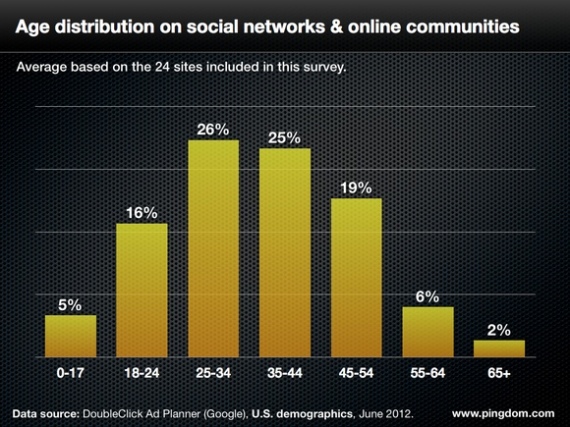 The recent convergence of social technologies in the CEO bag of tricks is great to see, bearing in mind the advancement of these technologies over the years. Nowhere more can we see the growing acceptance for social technologies and business practices than in the emerging trend and desire for CEOs to finally see their world expanding beyond their direct reports, and straight down to the grassroots level.
The recent convergence of social technologies in the CEO bag of tricks is great to see, bearing in mind the advancement of these technologies over the years. Nowhere more can we see the growing acceptance for social technologies and business practices than in the emerging trend and desire for CEOs to finally see their world expanding beyond their direct reports, and straight down to the grassroots level.
The emergence of social tech platforms like Facebook, Yammer, and Mindjet SpigitEngage have flattened the modern-day organization like nothing has ever been able to do before. This flatness and increasing democratization of knowledge-sharing across organizations has led to the creation of more nimble, more effective, more robust, and more customer-centric decision-making business entities — whether in the innovation space or otherwise. And, this effect hasn’t been lost on the CEO — the ultimate change agent in any organization.
Top-Down Innovation
The reality of it is that, whether or not you know it, your CEO is either currently planning or already conducting some sort of CEO Challenge –- that is, one that is led from the very top of the company, likely global in nature, and aimed at solving a problem right at the very apex of the organization. But why?
Why would a CEO open themselves up to this kind of transparency? After all, transparency and engagement are not typically at home in the CEO suite at most companies. Yet with changing times come changing attitudes — and changing methodologies.
There are several reasons why CEOs want to engage in a CEO or global challenge. The first is to share and mobilize the workforce around the company vision.
 A recent Forbes study found that, on average, about 70% of the employees in any given organization don’t know or don’t understand their company’s strategy. That lack of understanding translates into a lack of focused and coordinated action — something the modern-day business can’t afford in a world that demands ever-increasing speed in the way a company creates and recreates itself to meet the needs of its customers.
A recent Forbes study found that, on average, about 70% of the employees in any given organization don’t know or don’t understand their company’s strategy. That lack of understanding translates into a lack of focused and coordinated action — something the modern-day business can’t afford in a world that demands ever-increasing speed in the way a company creates and recreates itself to meet the needs of its customers.
A CEO challenge gives the CEO a chance to share the company vision. It allows them to engage employees at all levels to both understand that vision and help create and act on it. Very few modern-day vehicles in the organization can deliver that as effectively as a collaborative challenge, where people are not just communicated to, but are also engaged with the messaging coming from the top level.
Leveraging the Grassroots of Your Company
If there’s one thing that social technologies have taught us during their adolescent years, it’s that valuable knowledge, and the ability to form action around that knowledge, is not restricted to the realm of an elite few. Rather, the collaboration of many minds, with many different viewpoints, can lead to truly wondrous things.
As a result, it’s no wonder that CEOs have started seeing and wanting to leverage this, too. By breaking down traditional barriers, CEOs are able to glean insights and ideas from the people actually doing the work and interacting with customers on a daily basis, providing a more customer-centric view of the world, and one that is unfiltered by layers of management. That untapped community of employees also represents a fountain of new ideas unfettered by the self-perceived barriers of what “can’t be done,” that unfortunately, management and experience sometimes brings along.
Increasing Employee Engagement
The third reason CEOs run global challenges is to drive employee engagement — a rising concern for those in the C-suite who are coming to grip with the challenge of getting employees to be emotionally invested, as well as focused on creating value for their organizations on a daily basis. You may consider that to be a very soft subject, but it represents one of the bigger opportunities available for the modern-day enterprise.
 A recent Bain & Co study found that worldwide, only 13% of a company’s employees are actively engaged at work at any one time. Activelydisengaged employees outnumber engaged employees at a rate of nearly 2-1. That represents a huge opportunity cost for most companies.
A recent Bain & Co study found that worldwide, only 13% of a company’s employees are actively engaged at work at any one time. Activelydisengaged employees outnumber engaged employees at a rate of nearly 2-1. That represents a huge opportunity cost for most companies.
A further study from Polling company Gallup found that companies with higher engagement levels reported significantly higher profitability, customer ratings, decreased employee turnover and absenteeism, and even fewer safety incidents at work. Allowing disengagement to affect your most experienced staff and those who conduct the most valuable interactions in your organization is not lost on CEOs around the world. According to Bain & Co, active disengagement costs businesses approximately $450-500 billion every year.
Inspiring Big Changes
 The fourth reason CEOs take part in these types of challenges is to set a stake in the ground and inspire big change. There are few people in the company that can create the necessary momentum for an organization to actually change — but the CEO is, without a doubt, one person in the organization who is entirely capable of doing so.
The fourth reason CEOs take part in these types of challenges is to set a stake in the ground and inspire big change. There are few people in the company that can create the necessary momentum for an organization to actually change — but the CEO is, without a doubt, one person in the organization who is entirely capable of doing so.
The CEO is the ultimate change agent when it comes to inspiring cultural change, forcing innovational change, or even impacting industry-wide change outside of the organizational boundaries. And, whether it’s setting a big, audacious, X-Prize-like challenge or engaging in silo-busting collaborative challenges, the CEO Challenge is increasingly becoming the ultimate way for CEOs to express intent in the marketplace — to employees, customers, and investors alike.
Choosing the Wrong Methodology
Yet, many CEOs attack this strategy in the wrong way. For example: last year, Tim Cook was in the press for a CEO Challenge he issued to frontline retail employees using his communication vehicle of choice — email. Marissa Mayer issued a call for big new ideas, too.  Her forum? Knocking on her office door. And, since Yahoo! has more than 11,000 employees, that’s one heck of a queue. These and other inefficient methods result in overwhelming workloads, underwhelming response rates, and often, one-way, incomplete, ideas that haven’t had the benefit of collaborative input.
Her forum? Knocking on her office door. And, since Yahoo! has more than 11,000 employees, that’s one heck of a queue. These and other inefficient methods result in overwhelming workloads, underwhelming response rates, and often, one-way, incomplete, ideas that haven’t had the benefit of collaborative input.
Instead, consider what the leaders in this field — companies like Citibank, Intel, Bridgepoint, and others — are doing. These organizations use a focused, collaborative approach that not only solicits input, but also engages employees at the core to drive actionable results and real change.
In my next blog, I’ll go into greater detail about executing collaborative challenges, particularly when it comes to solving significant strategic problems and issues to consider — such as globality, legalities, incentives, and cultural hurdles. In the meantime – feel free to post your experiences with these kind of challenges in the comments below!












 I believe it was Albert Einstein who once said that the definition of insanity is “doing the same thing over and over again and expecting different results”. So I feel I’m in good company as I observe the sheer insanity of companies and the way they “embrace” innovation.
I believe it was Albert Einstein who once said that the definition of insanity is “doing the same thing over and over again and expecting different results”. So I feel I’m in good company as I observe the sheer insanity of companies and the way they “embrace” innovation.






 Belated Happy New Year from the land of Oz everyone! Apologies for the long absence, but as some of you know, my first post-Imaginatik act was to strap myself onto a plane and go off to the other side of the world to follow my other passion – exploring.
Belated Happy New Year from the land of Oz everyone! Apologies for the long absence, but as some of you know, my first post-Imaginatik act was to strap myself onto a plane and go off to the other side of the world to follow my other passion – exploring.





 In my last few days now at Imaginatik, a lot of contemplative questions keep getting asked at me by team members and colleagues hoping to glean one last bit of knowledge from me before I leave – but probably the best was from a colleague who asked me, if I could only pick one thing that made or broke an innovation program – what would it be.
In my last few days now at Imaginatik, a lot of contemplative questions keep getting asked at me by team members and colleagues hoping to glean one last bit of knowledge from me before I leave – but probably the best was from a colleague who asked me, if I could only pick one thing that made or broke an innovation program – what would it be.






















